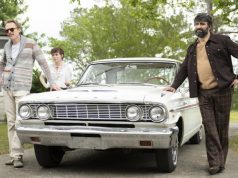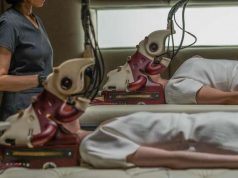I believe the song “Breakfast at Tiffany’s,” by Deep Blue Something, said it best: “It’s plain to see we’re over/And I hate when things are over/When so much is left undone.” I also hate when things are over when so much is left undone, especially when the things that are over are relationships.
Which brings me to my point. “Blue Valentine,” a somber, quiet film that has nothing to do with Deep Blue Something, explores the tragedy of failed love affairs in heartbreaking detail. I’m being glib because the movie is sad. It’s how I cope. You try watching “Blue Valentine” and see if it doesn’t remind you of some melancholy episode from your romantic past.
The exceptionally well-acted film stars Michelle Williams and Ryan Gosling as Cindy and Dean, a twentysomething couple in Scranton, Penn., who have a young daughter, Frankie (Faith Wladyka). Cindy works at a doctor’s office and Dean is a house painter. They are decidedly blue-collar and unpretentious. In the present, they are about to take an overnight trip together, just the two of them, to try to rekindle their marriage.
But the film is not entirely set in the present. Instead, we get a non-linear look at Dean and Cindy’s relationship, including scenes that happened before they met, like a starkly dramatic version of “500 Days of Summer.” This narrative device lets us glean small details about their lives gradually, resulting in an experience that’s more satisfying than a more traditional story would have been. (That’s another way of saying that told in the proper sequence, Cindy and Dean’s story is fairly ordinary.)
Williams and Gosling give performances that are better than every other element of the film (which was directed by Derek Cianfrance, from a screenplay he wrote with Joey Curtis and Cami Delavigne). Gosling, an intense actor from the Daniel Day-Lewis school of self-seriousness, disappears into the character of Dean, giving him quirks and tics, bringing him to life believably as a working-class guy who can’t properly express his love for Cindy. Williams, meanwhile, gives Cindy a tremendous amount of sad, listless frustration, which makes more sense the more we learn about her.
As a character study, “Blue Valentine” is superb. By the time it’s over, you feel like you’ve known these people their whole lives. Yet for all the earnest, doleful pathos involved, it doesn’t give the kind of catharsis in the end that it should. It’s a sad tale, and it’s well told — but what does it amount to? I feel like there’s so much left undone.
B (2 hrs.; )





